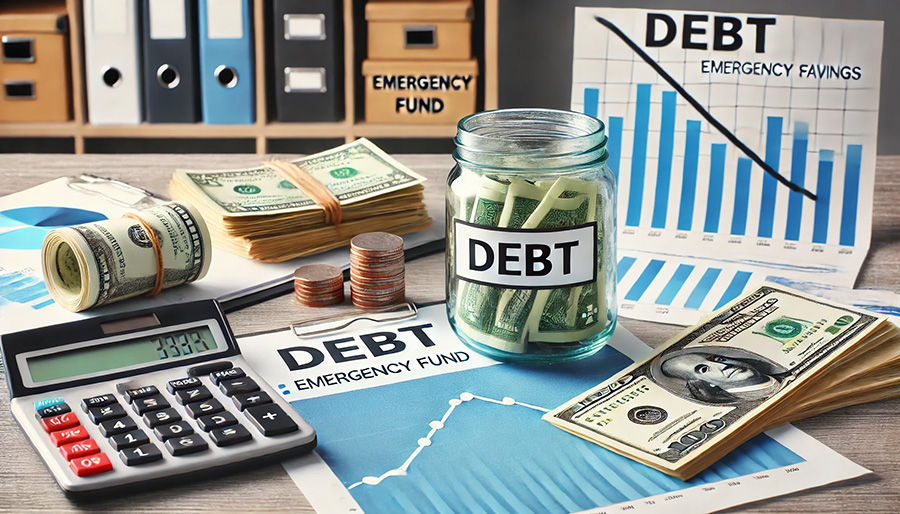How to Create a Debt Repayment Plan That Works

Dealing with debt can feel overwhelming, but having a solid debt repayment plan is crucial for achieving financial stability and peace of mind. A well-structured plan helps you prioritize your debts, manage payments, and avoid unnecessary interest costs, ultimately freeing you from debt faster. In this article, we’ll walk through how to create a debt repayment plan that works, with practical steps and strategies to help you take control of your financial situation.
1. Assess Your Debt Situation
Before you can create a repayment plan, it’s important to have a clear picture of your current debt. Start by gathering all your debt information, including:
- Total balances owed
- Minimum monthly payments
- Interest rates
- Payment deadlines
Write down all the debts you owe, including credit cards, personal loans, student loans, and any other liabilities. Having this list will help you prioritize which debts to focus on first and track your progress as you pay them off.
2. Calculate Your Monthly Income and Expenses
Next, determine how much money you have available each month to dedicate to debt repayment. Start by calculating your monthly income and then subtract your necessary expenses, such as:
- Housing (rent/mortgage)
- Utilities
- Groceries
- Transportation
- Insurance
- Minimum debt payments
The amount left over is what you can allocate toward paying down your debts. If this amount seems too low, consider adjusting your budget to reduce unnecessary expenses or find ways to increase your income.
3. Choose a Debt Repayment Strategy
There are two main strategies for paying off debt: the debt snowball method and the debt avalanche method. Each has its own advantages, and the best choice depends on your personal preferences and financial goals.
- Debt Snowball Method: With this approach, you focus on paying off your smallest debt first, while making minimum payments on all other debts. Once the smallest debt is paid off, you move to the next smallest. This method provides psychological motivation by giving you quick wins, but it may cost more in interest over time if your larger debts have higher rates.
- Debt Avalanche Method: This method focuses on paying off the debt with the highest interest rate first. By eliminating high-interest debt first, you save more money over time. However, it may take longer to see progress since you’re paying down larger balances.
Both methods are effective, but the right one for you depends on whether you prioritize motivation (snowball) or saving money on interest (avalanche).
4. Set Up a Realistic Timeline
A successful debt repayment plan requires setting clear goals. Determine a realistic timeline for when you want to be debt-free. This will help you break down your total debt into manageable monthly payments.
For example, if you owe $10,000 and aim to pay it off in three years, you’ll need to pay roughly $278 per month, plus interest. Adjust this timeline based on how much money you can reasonably allocate toward debt each month. Keep in mind that the longer your repayment plan, the more interest you may pay in the long run.
5. Make Extra Payments Whenever Possible
To speed up the repayment process, make extra payments whenever you can. Use any windfalls, such as tax refunds, bonuses, or unexpected cash, to pay down your debt faster. Even small additional payments can significantly reduce the interest you’ll pay over time.
Some lenders allow you to schedule extra payments specifically toward the principal balance, which can help you reduce the overall cost of your debt. Make sure to confirm that your extra payments are being applied toward the principal, rather than just covering future interest.
6. Consolidate or Refinance High-Interest Debt
If you’re carrying high-interest debt, such as credit card balances, consider consolidating or refinancing to reduce the interest rate. Lowering your interest rate can save you money and help you pay off your debt faster. Here are two options:
- Debt Consolidation Loan: This involves combining multiple debts into a single loan with a lower interest rate. Debt consolidation loans make it easier to manage your payments since you’ll have only one monthly payment to track.
- Refinancing: Refinancing replaces your current loan with a new one that has a lower interest rate or better terms. For example, you might refinance student loans or a mortgage to reduce your monthly payments.
Debt consolidation and refinancing work best for people with good credit scores who can qualify for better terms. However, these strategies may not be suitable for everyone, so carefully evaluate the costs and benefits before moving forward.
7. Automate Your Payments
One of the easiest ways to stay on track with your debt repayment plan is to automate your payments. Set up automatic transfers for at least the minimum payment on all your debts. This ensures you never miss a payment, which can save you from late fees and potential damage to your credit score.
In addition, if you receive regular income, you can automate extra payments toward your priority debt, making it easier to stay committed to your repayment goals without thinking about it every month.
8. Stay Motivated and Monitor Your Progress
Debt repayment can be a long and challenging journey, but staying motivated is essential to your success. Celebrate small milestones, such as paying off a credit card or hitting a savings goal, to keep your spirits high.
Track your progress regularly, either by using an app or a spreadsheet, to visualize how much your debt is decreasing over time. Seeing your progress can be a powerful motivator and reinforce your commitment to becoming debt-free.
9. Avoid Taking On New Debt
While you’re working to pay off existing debt, it’s crucial to avoid taking on new debt. This can be difficult, especially if you’re dealing with financial stress, but taking on additional debt will only set back your progress.
Consider using cash or debit cards for everyday purchases and avoiding credit card use altogether until your debt is under control. If you must use credit, make sure you pay off the balance in full each month to avoid accumulating more debt.
10. Seek Help If Needed
If you’re struggling to create or stick to your debt repayment plan, don’t hesitate to seek help. A financial advisor or credit counselor can help you analyze your financial situation and provide personalized guidance. They may also offer debt management programs (DMPs) to help you negotiate lower interest rates or consolidate debts into a single payment.
Conclusion
Creating a debt repayment plan that works requires discipline, organization, and determination. By assessing your debt, choosing the right repayment strategy, and staying motivated, you can take control of your financial future and work toward being debt-free. Whether you opt for the debt snowball or avalanche method, the key to success is sticking to your plan and making steady progress. With the right mindset and strategy, achieving financial freedom is within reach.




